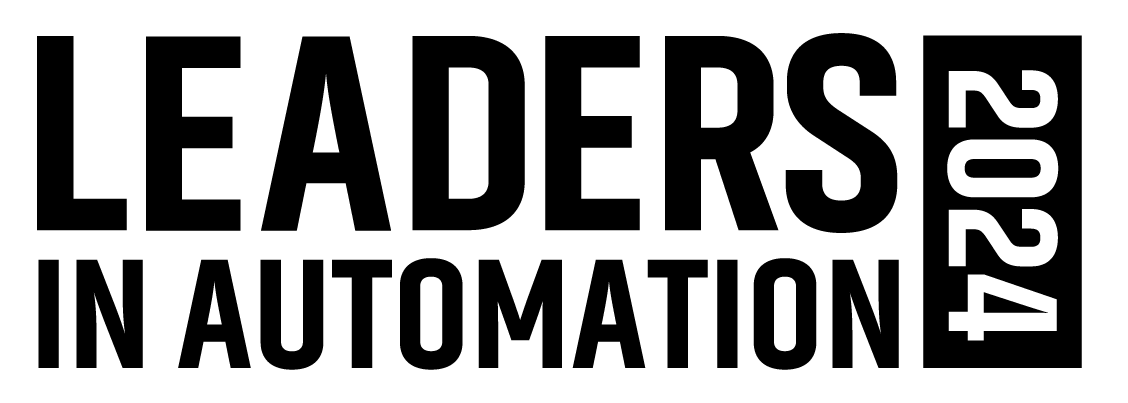Manufacturers are eyeing a digital future ripe with possibilities for optimization and new business models. However, a widening skills gap threatens to cripple the opportunities, putting pressure on vendors, educational institutions, and industry to step up efforts to boost worker competency in both emerging Industry 4.0 and legacy automation technologies.
Over the next decade, 4.6 million manufacturing jobs will be created, according to a 2018 study conducted by the Manufacturing Institute and Deloitte. But as many as 2.4 million of those positions are likely to remain unfilled because of the burgeoning skills gap and lack of qualified talent. The U.S. Bureau of Labor Statistics reported nearly 400,000 jobs in the manufacturing sector lay vacant in March 2018, roughly the same number as the year before. The steady stream of Baby Boomers heading for the retirement door, coupled with continued economic expansion, are exacerbating the vacancies.
At the same time, the growing lack of science, technology, engineering, and math (STEM) skills among the worker pool, a gradual decline in the number of technical education programs offered by public high schools and colleges, and a negative perception of manufacturing-sector careers have done little to remedy the situation.
The shortfall, which is only expected to worsen, is weighing heavily on manufacturers as they navigate their digital future. The National Association of Manufacturers (NAM) estimates that more than 80 percent of manufacturers are struggling to find qualified talent, making it their most pressing business issue today. Survey respondents say the lack of a modern industrial workforce will impede their ability to meet customer demand, innovate, and develop new products—a scenario that can ultimately have a negative impact on growth and profitability.
“The biggest risk for companies is falling behind competitively and that can easily happen when a company does not embrace new technology or their workforce doesn’t possess the skills in emerging automation technologies,” says Doug Schuchart, northeastern regional manager and material handling and logistics vertical manager for Beckhoff Automation. “Industry 4.0 concepts for predictive maintenance, machine learning for improved throughput, or leveraging data to reduce product waste and energy consumption can enhance machinery and add competitive value, but these are areas in which engineers may not have any existing experience.”
As a result, manufacturers find themselves at a pivotal juncture: Without access to a robust and skilled talent pool, they are constrained from pursuing a competitive automation agenda of smart factories, predictive maintenance, and self-organized logistics accomplished through next-generation technologies like robotics, the Industrial Internet of Things (IIoT), artificial-intelligence (AI), and advanced analytics. In fact, the NAM survey found the root of the current talent shortage lies not just with the lack of able bodies, but rather with increased demand for a shifting skills set that puts an emphasis on information technology (IT), digital tools, programming of robots and automation, and soft skills in areas like critical thinking and problem solving.
Skills in demand
Much of the existing industrial workforce does not have a background in emerging areas like advanced analytics, robotics, and digital manufacturing. Consider the smart factory that capitalizes on technologies like the cloud, machine learning, and IIoT to collect, filter, and analyze machine vibration, pressure, temperature, and throughput data to proactively manage equipment failures, optimize machine performance, or initiate preventive maintenance.
While manufacturers have gotten fairly proficient at connecting IIoT-enabled industrial equipment to the network while collecting and storing data, there is a knowledge gap in how to effectively analyze and leverage that data for the myriad new use cases, according to Robert Van Til, professor and department chair of industrial and systems in the engineering department at Oakland University. In addition, basic programming and math skills are now a necessity for production workers to be able to program computer numerical control (CNC) machines and robots on the plant floor or to interact with new human-machine interface (HMI) software and other engineering and digital manufacturing software.
“There is a burgeoning need for a more technically skilled trade level because automation is replacing jobs and moving up the skill level,” Van Til says. The factory worker tasked with attaching a simple bolt in a traditional plant-floor scenario could now serve as an operator that must interface with automation software, and that requires different skills, he explains.
Along with basic programming and scripting skills, there is also increasing emphasis on bridging the IT and operational technology (OT) divide so data can seamlessly flow between plant floor systems like supervisory control and data acquisition (SCADA) systems and manufacturing execution systems (MESs) into core enterprise IT platforms such as enterprise resource planning (ERP), product lifecycle management (PLM), and supply chain management (SCM). “The ability to do coding and work with SQL databases, whether writing queries or creating schemas—there is a real shortfall in terms of engineers having cross-discipline skills,” says Kevin McClusky, co-director of sales engineering at Inductive Automation. “Manufacturers realize that the job is no longer just about programming PLCs [programmable logic controllers]. It has to span both sides of the divide.”
Yet, it’s not just new industry 4.0 skills that are in short supply—manufacturers also need to boost competencies in legacy skill areas such as PLC programming and control system troubleshooting as an aging workforce retires, taking decades of tribal knowledge with them. “The folks working on legacy systems know how to keep the machines up and running, which is critical to any profitability and productivity measurement,” says Gail Norris, director of the Sitrain Digital Industry Academy at Siemens. “It’s the perfect storm with a combination of new skills needed and the legacy skills that still need to be maintained.”
The acquisition of legacy skills can be more of a problem than advanced technology expertise because the incoming workforce isn’t being taught older technologies, and many high schools aren’t doing enough to encourage a career track focused on manufacturing and automation. “The great enemy of manufacturers is not foreign cost competition, it’s the high school guidance counselor,” says Brian Fortney, global product manager for customer training at Rockwell Automation, who contends modern-day manufacturing is as legitimate a high-tech career as working for any of the big software giants. “They don’t do a good job of driving awareness and engagement in manufacturing careers as a step forward for individuals.”
Technical skills aren’t the only area in hot demand—soft skills around communications and project management are more important than ever, says Amanda Elmore, dean of the Industrial and Engineering Technology Division at Tri-County Technical College in Pendleton, S.C. “Twenty-first century workplace skills, including the ability to work in teams, are just as important now,” she says. “If your technical skills are average, but you have soft skills in spades, you’re actually more employable and promotable as long as you’re coachable.”
There is also a need for automation workers to be more multi-dimensional and not just competent in a particular area like robotics or material handling. For example, in today’s factories, roles are very well defined and have a smaller scope—someone loads materials or takes a part from here to there. Not so in the smaller, more localized factories of the future, where workers will need to be more flexible and understand different workloads.
“If you are producing several parts that might be different every day and the machine supports an automated workflow, you might have end-to-end responsibility for getting the materials to the machine to all the way through final quality control and shipment,” explains Virginia Palacios, global head of Multi Jet Fusion product management, 3D printing and digital manufacturing at HP.
Training the next-gen workforce
Vendors and educators are trying to shift the dynamics through new curriculum at both the high school and technical community college level and through partnerships with industry and universities. Rockwell and Yaskawa Motoman, for example, have joined up with the Robotics and Advanced Manufacturing Technology Education Collaborative (RAMTEC) on a number of workforce development efforts. Yaskawa Motoman and RAMTEC have formed the Ohio Manufacturing Workforce Partnership charged with creating STEM-aligned curriculum and training in Industry 4.0 technologies, while Rockwell has forged a similar relationship to create curriculum and certifications to ensure students graduate with a degree along with credentials in control logic, AC/DC, and other critical automation competencies.
As part of its partnerships with universities, Emerson is augmenting traditional curriculum development by investing in physical labs that allow students to learn automation technologies through hands-on training and real-world experiences. The company has instrumented a full-scale distillation site and industrial control lab at San Jacinto College in Houston to help students learn how to install, maintain, and troubleshoot integrated control systems through hands-on learning. “The trend is to have as life-like a facility as possible,” says Jeffrey Hackney, director of global education services at Emerson. “We can simulate everything going on from the distributed control system to process variables, and that gets the incoming workforce up and running more quickly.”
Training and reskilling is also happening at the corporate level. Vendors, seeing an uptick in demand for corporate reskilling and training, are building out a variety of programs designed to close the gap for in-demand automation technology skills. Some, like Rockwell, are delivering new online e-learning content to give employees the flexibility to choose how and when they get skills training, while Siemens and others have new services in place to create custom training programs depending on the corporate need.
Another way companies are addressing the skills gap is through the gig economy, hiring back retired industrial workers to come in and fill the legacy skills gap on an interim basis. “Maybe they need a maintenance person for a planned outage and they come back for a three-week assignment,” Siemens’ Norris says. “These folks can help teach the new hires and pass on all that institutional knowledge.”
However the skills gap is being addressed, in the enterprise or at the educational level, the process needs to be a continuous one given the accelerated pace of change in both technology and industrial applications. “We have to be prepared for the rate of change taking place,” Tri-County’s Elmore says. “The truth is, we are preparing students for jobs that don’t exist yet and will change again in five years.”

